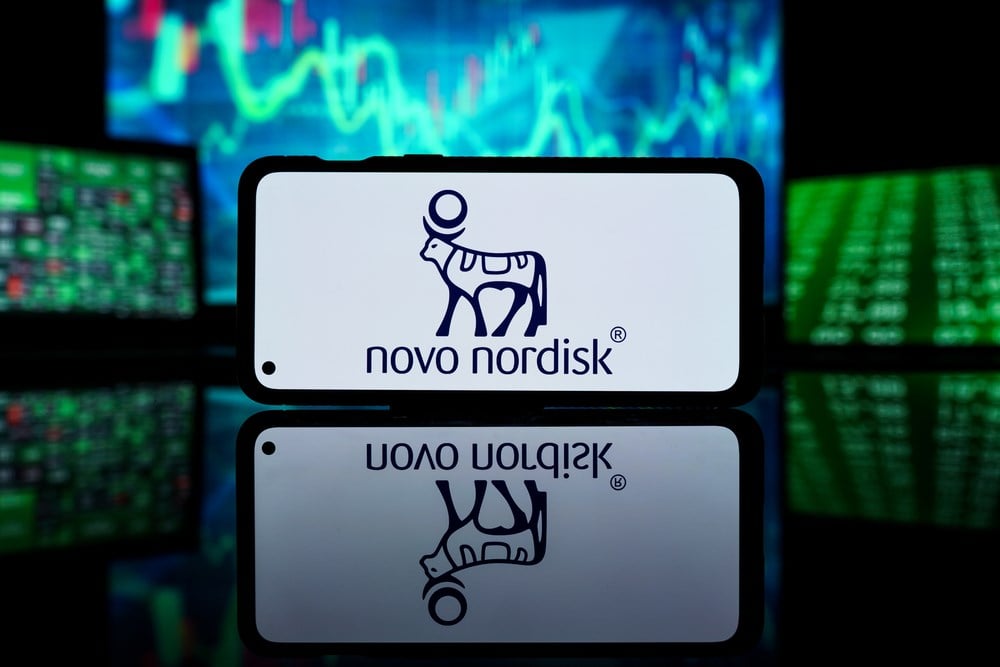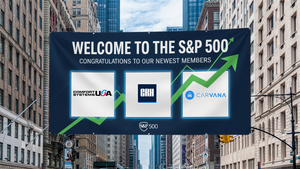
If the ‘O o o Ozempic’ jingle is stuck in your head, you can thank Novo Nordisk A/S (NYSE: NVO). The Denmark-based pharmaceutical giant is on a binge advertising campaign to capitalize on the world’s growing appetite for weight loss drugs.
The only catch — Ozempic is a diabetes drug.
Ozempic is one of several dual-use treatments for both diabetes care and obesity. More accurately called Wegovy when prescribed as a higher dose weight loss drug, the medication has taken the world by storm after the U.S. Food and Drug Administration (FDA) approved semaglutide for both indications in 2021.
Eli Lilly’s Mounjaro and an increasing list of other injectables that are being developed to target blood sugar levels are also in the mix of what’s forecast to become a $22.9 billion global obesity drug market by 2030. Novo Nordisk’s head start in the rapidly growing space is already reshaping consumer habits.
One industry that isn’t thanking Novo Nordisk is food manufacturing. On Friday, Walmart said that appetite-suppressed shoppers are starting to pare back on food purchases. Kellanova, Mondelez International and Nestle have echoed the observation. Waning interest in calorie-dense snacks and drinks could spell doom for some of the world’s leading food and beverage makers.
Conversely, the rapidly growing demand for Novo Nordisk’s GLP-1 diabetes and obesity treatments are fattening up its financial results. For the first half of 2023, revenue was up 30% — led by 363% growth in Wegovy — and earnings per share (EPS) were up 44% on a local currency basis. In U.S. dollar terms, the company hauled in more than $15 billion in revenue. Management’s decision to raise its full-year sales growth outlook to 27% to 33% reflects Novo Nordisk’s massive market share in a pair of fast-growth markets — and may actually be too conservative.
What Is Novo Nordisk’s Growth Outlook?
Novo Nordisk controls approximately one-third of the $62 billion diabetes care market, including both its GLP-1 and insulin products. Its share of the obesity care market is even greater at 42% and has increased since last year. Obesity care is only one-tenth the size of diabetes care but is the faster growing market. It also accounts for less than 20% of Novo Nordisk revenue. Ample expansion opportunity in a high growth market is a winning formula — and the main reason for investors to own the stock.
Outside of diabetes and obesity, the company also derives revenue from treatments for rare diseases such as hemophilia, sickle cell disease and various growth disorders. It also boasts an extensive pipeline of drug candidates, several of which are in Phase 3. New formulations of its semaglutide blockbuster, combination therapies involving semaglutide and a potential new use for semaglutide in treating Alzheimer’s disease all point to a promising long-term growth outlook.
Based on projected 2023 EPS, Novo Nordisk shares are trading at 42x earnings. Among the half dozen mega cap pharmaceutical companies, this is the second highest P/E ratio. But given the company’s strong market positions and the growth potential of its pipeline, the premium is justified.
Eli Lilly has a 2023 P/E of 58x, which means Novo Nordisk trades at a 28% discount to its closest peer. While Eli Lilly has made more progress with its Alzheimer’s program and has a strong pipeline of its own, the valuation disparity could draw investors towards Novo Nordisk.
One more reason to lean towards the Danish company as an obesity drug play is that its share price is much lower. Last month, Novo Nordisk completed a 2-for-1 stock split that put its price under $100. Eli Lilly, which hasn’t done a split since 1997, goes for about $565 per share.
Does Novo Nordisk Pay a Dividend?
Novo Nordisk also wins out against Eli Lilly when it comes to dividend payments. While its dividend frequency is semiannual (rather than quarterly at Eli Lilly), Novo Nordisk has a slightly higher forward yield (1.0% versus 0.8%). Both yields, however, are below the healthcare sector average, which reflects the companies’ superior growth prospects that make reinvestment the priority over cash payouts.
Over the last 15 years, Novo Nordisk has generated a 22.2% annualized total return for investors. This is more than twice the industry return over the same period — even more reason for the premium valuation. Wall Street’s average target on the thinly covered name is $108.50. Including the dividend, this equates to almost 20% upside over the next 12 months, not far from the stock’s long-term performance.
Ozempic users may be losing their appetites for sweets…but Novo Nordisk is one Danish treat that the market may only get hungrier for.



